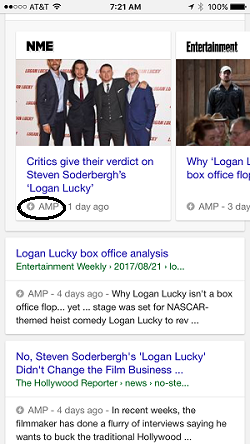Searching for a new trail to hike or ride? Searching for people to fill your positions at work? How do you optimize finding options and solutions for these questions? There were the traditional ways of asking friends, local shop employees or colleagues. Today, there are a multitude of ways to improve how you obtain information to make the time you spend more productive and enjoyable when venturing out. Similarly, when it comes to search engine optimization (SEO), most people only know the more popular elements of search that are talked about every day. These tactics include; local and organic link building, on-page optimization, and sometimes small tidbits of technical SEO for outdoor companies. However, there are so many tactics that go beyond what most people know.
The SEO for outdoor brands strategy tips that you will see throughout this post are vital to the success of your website's rankings and traffic.
Focus On Topics, Not Keywords

Google and its algorithm are always changing. It is more important for us to optimize for the intention of the user. What are they looking for? What question do they need answered? If you can figure out the user intent, you can own the search results for some of those topics.
In this day and age, don't expect to rank with an exact match keyword strategy. We need to stop looking at keywords and start looking at queries because that is what the user searches. Make sure you are thinking and researching many different ways your audience can phrase a particular topic.
If you know your target audience, you can break your site page content out into themes or topics. This will help you decide what your user intent is and you can start coming up with search queries to write about or undertake search engine optimization for outdoor companies to try and get the maximum amount of traffic to your site.
Video SEO
55% of Google searches return at least one video, and over 80% of those are coming from YouTube, which is also the second largest search engine.
In my opinion, SEO for videos, YouTube in particular, is used way less than it should. It not only helps your website rank faster, it also makes your videos look a lot cleaner and put together getting you additional traffic to your site. This you could get twice the traffic with the same piece of content.
In order for this tactic to work, you have to make sure you are making these videos SEO friendly. Below are some tips of how to do that:
- Create a compelling video title that is 5+ words with a broad keyword included.
- Google cannot read a video, so make sure you let the video description. (Try a really, really short blog post)
- Obviously don't forget links back to relevant external and internal sources.
- Choose a pretty thumbnail that is actually going to get clicks, not the one they automatically choose for you.
- If you can make the video longer...do it!
Switch to HTTPS
Changing from HTTP to HTTPS is recommended because it will boost your SEO and make it a lot harder for spammers, hackers, and other dubious characters to get in and take advantage of your website. When Google announced it was making HTTPS a ranking factor, it was one of the smallest ones, and it is still not very much. However, on August 17, 2017, I received a couple emails from Google Search Console that read:

Starting in October, if your website is not secure, your users will start to see errors on some elements on your website, especially if they fill out a form. Companies that don't have HTTPS enabled will have to worry about the security of their website, lower SERP rankings, and higher bounce rates.If users see that the site isn't secure, they'll be more likely to bounce for fear of providing their contact information to a non-secure website.
It can be a little difficult to make your site secure, but if you have a content management system like the HubSpot COS or Wordpress, there will be some great plugins and applications for you to use.
Schema
Schema markup is a type of code that you can put on your website to help Google return more informative, interactive results for your users. They can be used for many different elements on your website; from blog articles to addresses to movie reviews.

You can transmit data to Google that they might not necessarily be able to read. Some example elements it can translate are the following:
- Articles
- Local Businesses
- Business Reviews
- Restaurants
- TV Episodes & Ratings
- Book Reviews
- Movies
- Software Applications
- Events
- Products
Schema Markup can be confusing to implement, so it is suggested to have a developer or experienced SEOer implement it for you.
AMP
Accelerated Mobile Pages, or AMP, is a Google-backed project that is meant to be used by any webmaster to have your pages load faster when a user is on mobile. When this is enabled, it tells the browsers to first load the content before any of the media elements. This increases page speed, therefore helps user-experience by getting people exactly what they want in a timely manner.
“In early tests, we found that AMP pages load four times faster and use eight times less data than traditional mobile-optimized pages,” says Pinterest’s product engineer, Jon Parise. “A better, faster mobile web is better for everyone, including users, platforms like Pinterest, and publishers.”
In addition to faster page load times, Google has also begun to show these AMP enabled pages in a special carousel at the top of the mobile search results for only these types of pages. You will now have the advantage of being at the top of the mobile search results in some instances.

There are a couple ways of implementing Accelerated Mobile Pages. One way is to revamp your website using a specific AMP HTML code. A different way, if you are using a CMS like HubSpot or Wordpress, is to use their functionalities or plugins that do all the work for you!
There are many different tactics to improve SEO for outdoor companies that webmasters and SEOers are not using. These are some of the vital elements that need to be implemented in order to stay relevant, grow traffic, and increase in rank. Make sure you are optimizing your site content for topics rather than keywords to cast a wider net. Don't forget to optimize your YouTube videos properly for search. Finally, make sure you are considering all technical SEO elements such as HTTPS, Schema, & AMP for that extra bit of ranking that most people do not target.
Ultimate Guide To Ecommerce SEO



